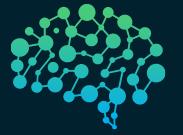Integrate IP Camera with YONOv8
1. Understanding YOLO: An Overview of the Algorithm
You Only Look Once (YOLO) is an object detection algorithm that processes the entire image in a single pass, dividing it into a grid and predicting bounding boxes, class probabilities, and objectness scores for each cell. The real-time capability of YOLO is achieved by optimizing its detection pipeline, making it an ideal choice for dynamic scenarios like security surveillance.
2. Advantages of Integrating IP Cameras with YOLO8
Integrating IP cameras with YOLO8 offers numerous advantages for surveillance applications:
a) High-Resolution Streams: IP cameras provide high-resolution video streams, enabling better object recognition and reducing false positives.
b) Flexible Connectivity: IP cameras can be easily connected to the local network or the internet, allowing remote access to surveillance feeds.
c) Real-time Monitoring: YOLO’s efficiency combined with IP cameras’ real-time streams offers live monitoring capabilities for enhanced security.
d) Scalability: IP cameras can be deployed in multiple locations and integrated into a centralized surveillance system, providing a scalable solution for large areas.
3. Preparing the Environment: Software and Hardware Requirements
Before integrating IP cameras with YOLO8, ensure that you have the necessary hardware and software in place:
a) Hardware Requirements: A computer with a powerful GPU (Graphics Processing Unit), sufficient RAM, and ample storage is essential for running the YOLO8 model efficiently.
b) Software Dependencies: Install Python, OpenCV, and other required libraries to facilitate the integration process.
4. Setting Up IP Cameras for Integration
To integrate IP cameras into the YOLO8 model, follow these steps:
a) Connect IP Cameras: Ensure that the IP cameras are appropriately connected to the local network or the internet, allowing seamless communication.
b) Obtain the RTSP URL: Retrieve the RTSP (Real-Time Streaming Protocol) URL of each IP camera. This URL will be used to access the video feed for processing.
c) Configure Camera Settings: Adjust camera settings such as resolution, frame rate, and exposure to optimize object detection performance.
d) Implement Security Measures: Strengthen the security of IP cameras by changing default passwords, enabling encryption, and restricting access to authorized personnel.
from ultralytics import YOLO
# # Load a pretrained YOLOV8 model
model = YOLO("best.pt")
# # Use the model to predict, detect, and track from the live IP camera
results = model.track(source='rtsp://username:password@ip of ip camera/', show=True)
print(results)
where best.pt is the trained model over the your customized dataset and classes .where you can classify according to your requirements.
5. Choosing the Right YOLO8 Version and Framework
Selecting the appropriate YOLO8 version and framework is crucial for successful integration. Some popular choices include:
a) Darknet: The original implementation of YOLO8, written in C and CUDA, offers excellent performance but might require additional effort for customization.
b) YOLOv3: A widely used version with improved accuracy and detection capabilities, available in various pre-trained configurations.
c) YOLOv4: A more recent iteration, boasting state-of-the-art accuracy and speed, but demanding more computational resources.
d) YOLOv5: A streamlined and efficient version of YOLO8, focusing on simplicity and ease of use.
Latest YOLOv8 and YOLONAS very popular released in 2023
Must Read
How to extract data from website using python web crawler
6. Data Collection and Annotation for IP Cameras
For training the YOLO8 model with IP cameras, you need a labeled dataset. Follow these steps for data collection and annotation:
a) Collect Surveillance Data: Capture images or record videos from the IP cameras in various scenarios, including different lighting conditions and object orientations.
b) Annotate the Dataset: Use annotation tools to label objects of interest in the images or video frames, including bounding boxes and corresponding class labels.
7. Fine-tuning YOLO for IP Cameras
Fine-tuning the YOLO model with the annotated dataset and IP camera configuration is crucial for achieving accurate detection results:
a) Transfer Learning: Initiate the YOLO8 model with pre-trained weights on a large dataset (e.g., COCO dataset) to expedite convergence.
b) Adjust Hyperparameters: Tune hyperparameters such as learning rate, batch size, and number of iterations to optimize the model’s performance.
c) Data Augmentation: Augment the dataset by applying transformations like rotation, scaling, and flipping to diversify the training samples.
8. Evaluating Model Performance and Accuracy
To assess the trained YOLO8 model’s performance, use metrics like mAP (mean Average Precision) and IoU (Intersection over Union). mAP measures the accuracy of object detection, while IoU evaluates the overlap between the predicted bounding boxes and the ground truth.
Continuously evaluate the model’s performance and make necessary adjustments to improve accuracy.
9. Real-time Object Detection with Integrated IP Cameras
Implementing real-time object detection using integrated IP cameras and the trained YOLO8 model involves the following steps:
a) Access IP Camera Feeds: Use the obtained RTSP URLs to access the live video streams from the IP cameras.
b) Object Detection: Pass the video frames through the YOLO8 model for real-time object detection.
c) Post-processing: Apply non-maximum suppression to remove duplicate and low-confidence detections, leaving only the most accurate results.
10. Future Prospects and Improvements
As technology evolves, there are exciting possibilities for enhancing IP camera integration with YOLO8:
a) Improved Hardware: Advancements in GPUs and specialized AI chips will enable even faster real-time object detection.
b) AI-based Camera Calibration: AI algorithms could automatically calibrate cameras to optimize detection performance.
c) Multi-camera Fusion: Integrating data from multiple IP cameras to improve object tracking and scene understanding.
d) Edge-based Processing: Utilizing edge computing for real-time processing and reducing dependence on central servers.
Integrating IP cameras with the YOLO8 model offers a powerful solution for real-time object detection in surveillance applications. By following this comprehensive guide, you have learned the steps to prepare the environment, collect data, fine-tune the model, and implement real-time object detection with IP cameras.
As technology continues to advance, the integration of IP cameras and YOLO8 will play a significant role in revolutionizing surveillance systems and enhancing security in various domains. Embrace this integration and stay at the forefront of the evolving world of computer vision and object detection.

